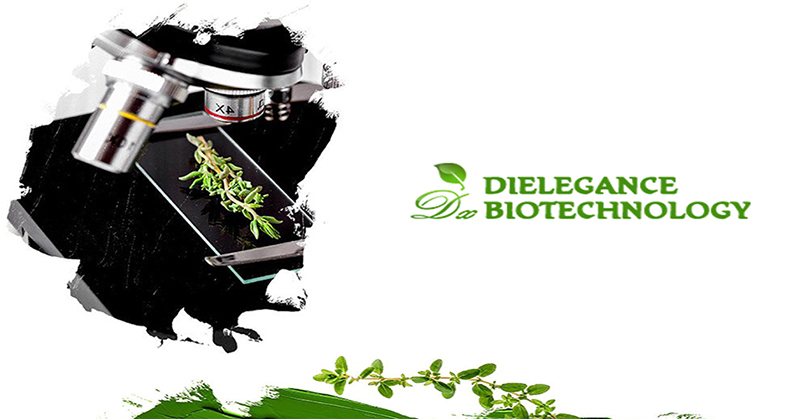By Dielegance Biotechnology | 19 December 2024 | 0 Comments
Camu Camu - Herb Source for Camu Camu Extract

Nowadays more and more people are interested in the herb extract products due to its natural efficacy on human health but without significant side effect. Take Camu Camu Extract for example, people love it because of its active ingredients Vitamin C. The fruit contains high vitamin C content, up to 2~3%. That's about 2,000 to 3,000 mg in 100 grams of fruit, which is very rare in plants. Lemons are one of the fruits known to have higher levels of vitamin C, at 22mg/100g, which is only about 1% of the level of camu camu fruit. Camu camu fruit extract is mainly used as food health material.
Brief Information
Camu Camu
Latin Name: Myrciaria dubia (Kunth) Mcvaugh
Myrtaceae
-
Myrciaria dubia
-
Camu-camu
-
Camucamu
-
caçari
-
araçá-d'água
-
camocamo
Botanical Description
It is a species of plant in the family Myrtaceae. It is a small bushy riverside tree from the Amazon rainforest in Peru and Brazil, which grows to a height of 3–5 m (9.8–16.4 ft) and bears a red/purple cherry-like fruit. It is a close relative of the jabuticaba (Myrciaria cauliflora) and the guavaberry or rumberry (Myrciaria floribunda). As much as 2-3% of the fresh fruit is vitamin C.
Camu-camu has small flowers with waxy white petals and a sweet-smelling aroma. It has bushy, feathery foliage. The evergreen, opposite leaves are lanceolate to elliptic. Individual leaves are 3–20 cm (1.2–7.9 in)m in length and 1–2 cm (0.39–0.79 in) wide.
The camu-camu fruit is maroon or purple-black when fully ripe, around 25mm in diameter, with either sweet or acidic flesh.
Fruit
INFORMATION
Camu, also known as cacari, camocamo or myrciaria dubia, is native to the Peruvian lowland jungle and grows on bushy trees along riverbanks and in flooded areas of the Amazon rainforest. Its extraordinary high Vitamin C content in combination with other for our body beneficial nutrients makes Camu Camu another Peruvian superfood.
The small, green, or red Camu Camu fruits are extremely acidic and taste like a cross between a lime and a sour cherry. Due to its extreme sourness and unique flavor Camu Camu is rarely eaten fresh, but best enjoyed mixed into juices, smoothies, jams, yogurt and ice cream. Today Camu Camu is also available in supplement form.
Camu Camu impresses with its extremely high Vitamin C content. Depending on its ripeness, the fruit contains about 10 to 20 times the amount of Vitamin C of an orange and 40 to 60 times the amount of Vitamin C of a lime – actually the Vitamin C level decreases as the fruit ripens while the flavors increase.
Additionally, Camu Camu has a high content of other nutrients and powerful, bioactive plant compounds, including micronutrients such as magnesium, sodium, calcium, zinc, potassium and copper, an array of amino acids such as serine, leucine and valine, and carotenoids (lutein, beta-carotene and zeaxanthin).
Myrciaria dubia (Camu Camu) is a small and medium-sized shrub found in Brazil, Peru and other places in the Amazon Basin. It has small white waxy flowers and red or purple berries. The fruit contains high vitamin C content, up to 2~3%.That's about 2,000 to 3,000 mg in 100 grams of fruit, which is very rare in plants. Lemons are one of the fruits known to have higher levels of vitamin C, at 22mg/100g, which is only about 1% of the level of camu camu fruit. Camu camu fruit extract is mainly used as food health material.
The camu camu berry is an excellent source of calcium, phosphorus, potassium, iron, the amino acids serine, valine and leucine, as well as small amounts of the vitamins B1 (thiamine), B2 (riboflavin) and B3 (niacin). Camu camu also contains high levels of anthocyanins, bioflavonoids, and other essential co-factors. All of these nutrients help the body make full use of the abundant levels of Vitamin C found in this super fruit.
Camu Camu Powder is about 15% Vitamin C by weight. In comparison to oranges, camu camu provides 30-50 times more vitamin C, ten times more iron, three times more niacin, twice as much riboflavin, and 50% more phosphorus.
Hefei Dielegance Biotechnology Co., Ltd., sharing this knowledge and experience about camu camu herb, grasps the chance to cooperate with several universities to manufacture camu camu fruit extract for the human use. Our Camu Camu Extract includes several specifications for you to choose, such as 10:1, 20% VC. If you have any demand, you are welcomed to send us an inquiry or contact us.

Leave a Reply
Your email address will not be published.Required fields are marked. *
POPULAR BLOG
- Beyond the Mug: Creative Culinary Uses of Matcha & Black Tea Powder for a Festive Season
- Fo-ti (Fo Ti) - Herb Source for Fo-ti Extract
- Camu Camu - Herb Source for Camu Camu Extract
- Natural Garlic Oil - Radiocarbon Carbon-14 (14C) Test
- Garlic Oil – HACCP Plan for Hefei Dielegance Biotechnology Co., Ltd.
ARCHIVES